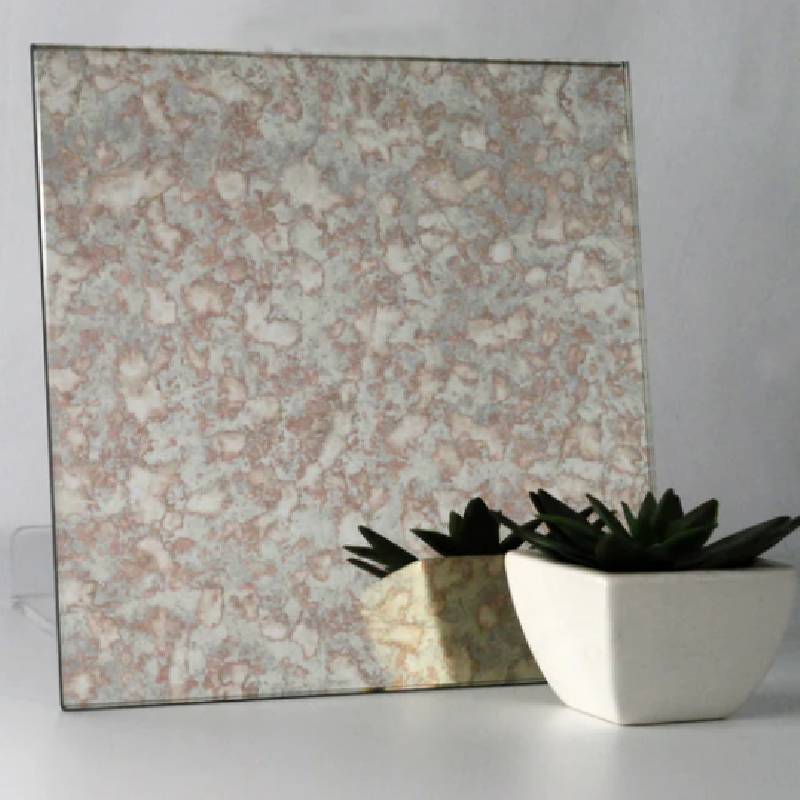The Art of Frosted Glass Acid Etching Techniques and Applications
Frosted glass has become a popular choice for both aesthetic and functional purposes in modern design, architecture, and home décor. Its unique ability to diffuse light while providing a level of privacy makes it ideal for various applications, from shower doors to partitioning offices. One of the most prevalent techniques for creating this stunning effect is acid etching. In this article, we will explore the process of acid etching, its advantages, and its diverse applications in both commercial and residential settings.
What is Acid Etching?
Acid etching is a method used to create a frosted finish on glass by selectively removing its surface through chemical means. The process involves applying an acid solution to the glass, which reacts and dissolves certain parts of the surface, creating a rough texture that scatters light. This technique not only imparts a frosted appearance but can also be used to create intricate designs and patterns.
The most commonly used acid for etching glass is hydrofluoric acid, a highly corrosive substance that must be handled with extreme care. Because of its dangerous nature, proper safety precautions—including gloves, goggles, and proper ventilation—are essential during the etching process. Many professionals in the industry also opt for safer alternatives or pre-made etching creams, which provide a similar effect without the risks associated with handling strong acids.
The Etching Process
The acid etching process can be broken down into several key steps
1. Preparation Start by cleaning the glass surface thoroughly. Any dust, oil, or fingerprints can interfere with the etching process and compromise the final result.
2. Masking Apply a protective layer or masking tape to areas of the glass that you do not want to etch. This is especially crucial when creating designs or patterns, as precision is important.
3. Application of Acid Once the masking is securely in place, the acid is applied to the exposed areas using a brush or spray. The reaction time depends on the desired depth of etch, but it usually ranges from a few seconds to several minutes.
4. Neutralization After reaching the desired effect, the acid must be neutralized. This can be done by rinsing the glass with water, followed by a solution of baking soda or another neutralizing agent.
frosted glass acid etching
5. Final Cleaning Finally, remove the masking tape and clean the glass again to ensure a clear and flawless finish.
Advantages of Acid Etching
The advantages of acid etching extend beyond its aesthetic appeal. The technique provides a durable and long-lasting solution compared to other methods such as sandblasting or vinyl application. The etching becomes part of the glass, making it resistant to wear and tear.
Moreover, acid-etched glass can be customized in endless ways—patterns can range from simple frosted sections to elaborate artistic designs that tell a story or convey a brand identity. This versatility allows designers and architects to incorporate unique elements into their projects, adding value and character.
Applications of Frosted Glass
1. Interior Design Frosted glass is commonly used in residential spaces for doors, windows, and shower enclosures, providing privacy without sacrificing light.
2. Commercial Spaces Offices often use frosted glass in conference rooms and cubicles to create a sense of openness while maintaining confidentiality. It can also be a means of branding, with company logos integrated into the design.
3. Architectural Features Many modern buildings utilize frosted glass in façades, skylights, and partitions. This serves not only as a design element but also contributes to sustainability by maximizing natural light.
4. Art Installations Artists often use acid-etched glass in their work, creating stunning visual effects that play with light and shadow, pushing the boundaries of traditional art forms.
Conclusion
Acid etching is a remarkable technique that has transformed the way we view glass in design and architecture. Its ability to combine functionality with beauty makes frosted glass an ideal choice for a variety of applications. As technology and techniques continue to evolve, we can expect even more innovative uses and designs to emerge, further solidifying the role of frosted glass in contemporary aesthetics. Whether in a home, office, or public space, acid-etched glass will continue to enhance environments through its delicate yet striking charm.
 Afrikaans
Afrikaans  Albanian
Albanian  Amharic
Amharic  Arabic
Arabic  Armenian
Armenian  Azerbaijani
Azerbaijani  Basque
Basque  Belarusian
Belarusian  Bengali
Bengali  Bosnian
Bosnian  Bulgarian
Bulgarian  Catalan
Catalan  Cebuano
Cebuano  Corsican
Corsican  Croatian
Croatian  Czech
Czech  Danish
Danish  Dutch
Dutch  English
English  Esperanto
Esperanto  Estonian
Estonian  Finnish
Finnish  French
French  Frisian
Frisian  Galician
Galician  Georgian
Georgian  German
German  Greek
Greek  Gujarati
Gujarati  Haitian Creole
Haitian Creole  hausa
hausa  hawaiian
hawaiian  Hebrew
Hebrew  Hindi
Hindi  Miao
Miao  Hungarian
Hungarian  Icelandic
Icelandic  igbo
igbo  Indonesian
Indonesian  irish
irish  Italian
Italian  Japanese
Japanese  Javanese
Javanese  Kannada
Kannada  kazakh
kazakh  Khmer
Khmer  Rwandese
Rwandese  Korean
Korean  Kurdish
Kurdish  Kyrgyz
Kyrgyz  Lao
Lao  Latin
Latin  Latvian
Latvian  Lithuanian
Lithuanian  Luxembourgish
Luxembourgish  Macedonian
Macedonian  Malgashi
Malgashi  Malay
Malay  Malayalam
Malayalam  Maltese
Maltese  Maori
Maori  Marathi
Marathi  Mongolian
Mongolian  Myanmar
Myanmar  Nepali
Nepali  Norwegian
Norwegian  Norwegian
Norwegian  Occitan
Occitan  Pashto
Pashto  Persian
Persian  Polish
Polish  Portuguese
Portuguese  Punjabi
Punjabi  Romanian
Romanian  Russian
Russian  Samoan
Samoan  Scottish Gaelic
Scottish Gaelic  Serbian
Serbian  Sesotho
Sesotho  Shona
Shona  Sindhi
Sindhi  Sinhala
Sinhala  Slovak
Slovak  Slovenian
Slovenian  Somali
Somali  Spanish
Spanish  Sundanese
Sundanese  Swahili
Swahili  Swedish
Swedish  Tagalog
Tagalog  Tajik
Tajik  Tamil
Tamil  Tatar
Tatar  Telugu
Telugu  Thai
Thai  Turkish
Turkish  Turkmen
Turkmen  Ukrainian
Ukrainian  Urdu
Urdu  Uighur
Uighur  Uzbek
Uzbek  Vietnamese
Vietnamese  Welsh
Welsh  Bantu
Bantu  Yiddish
Yiddish  Yoruba
Yoruba  Zulu
Zulu 

